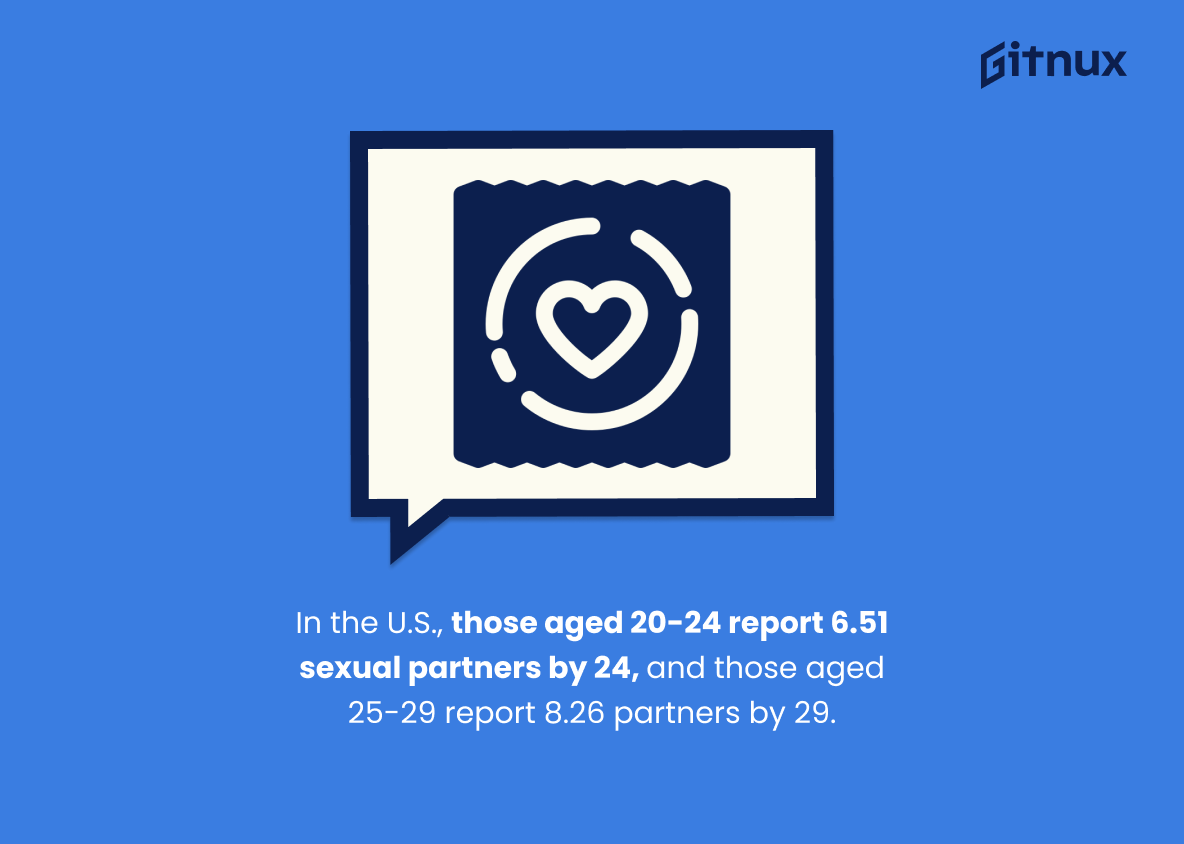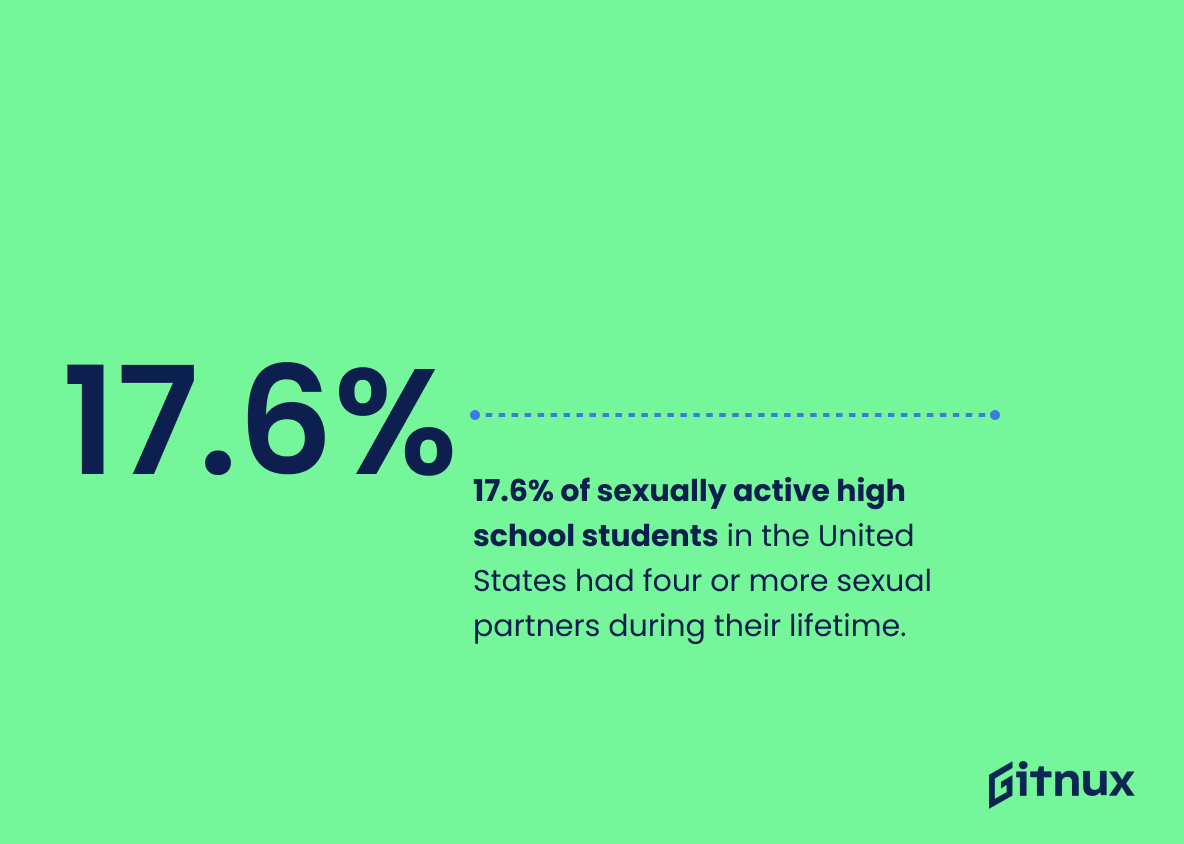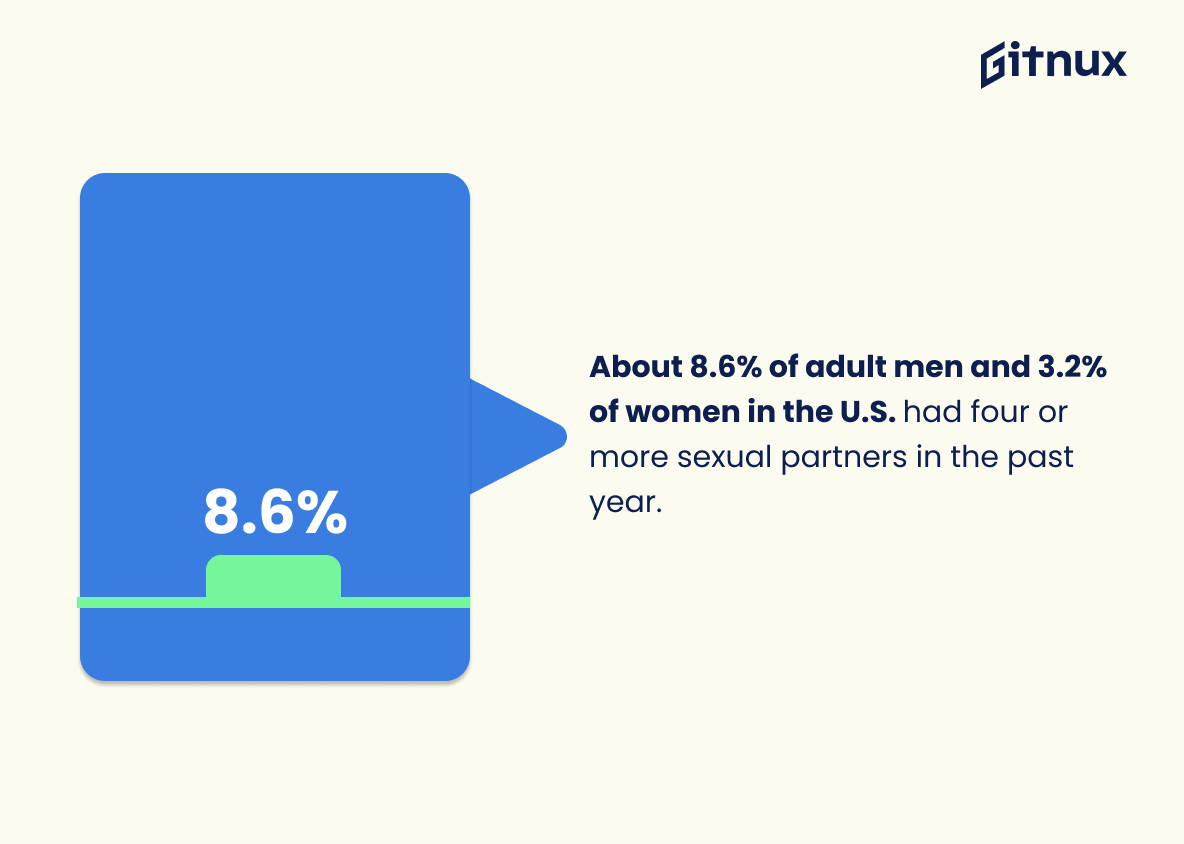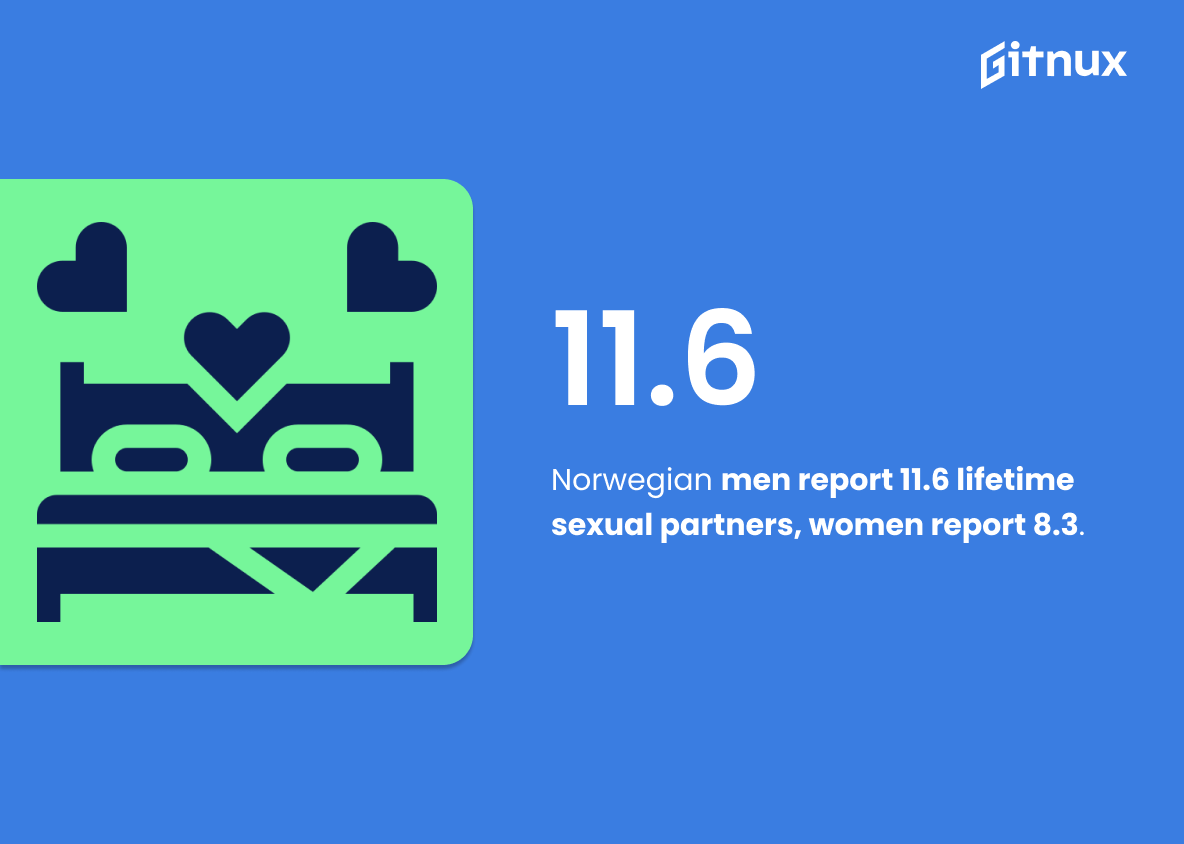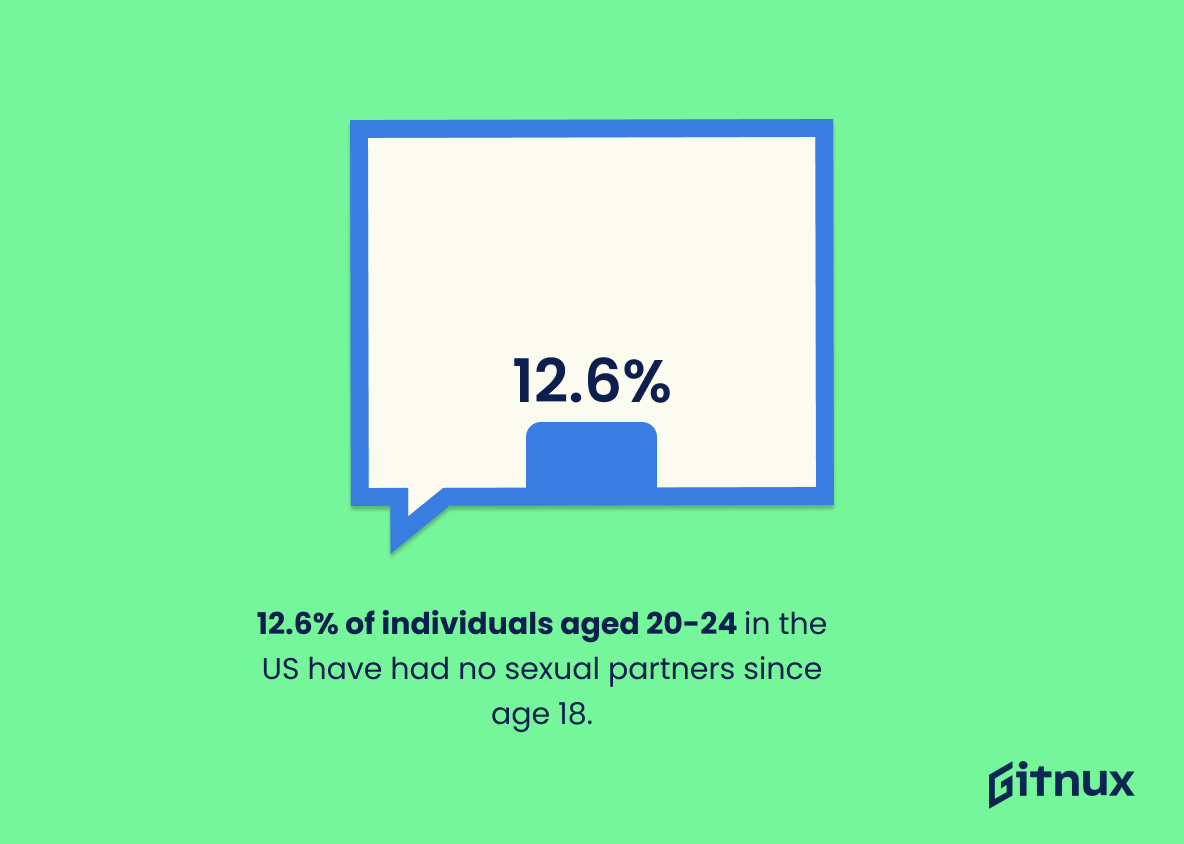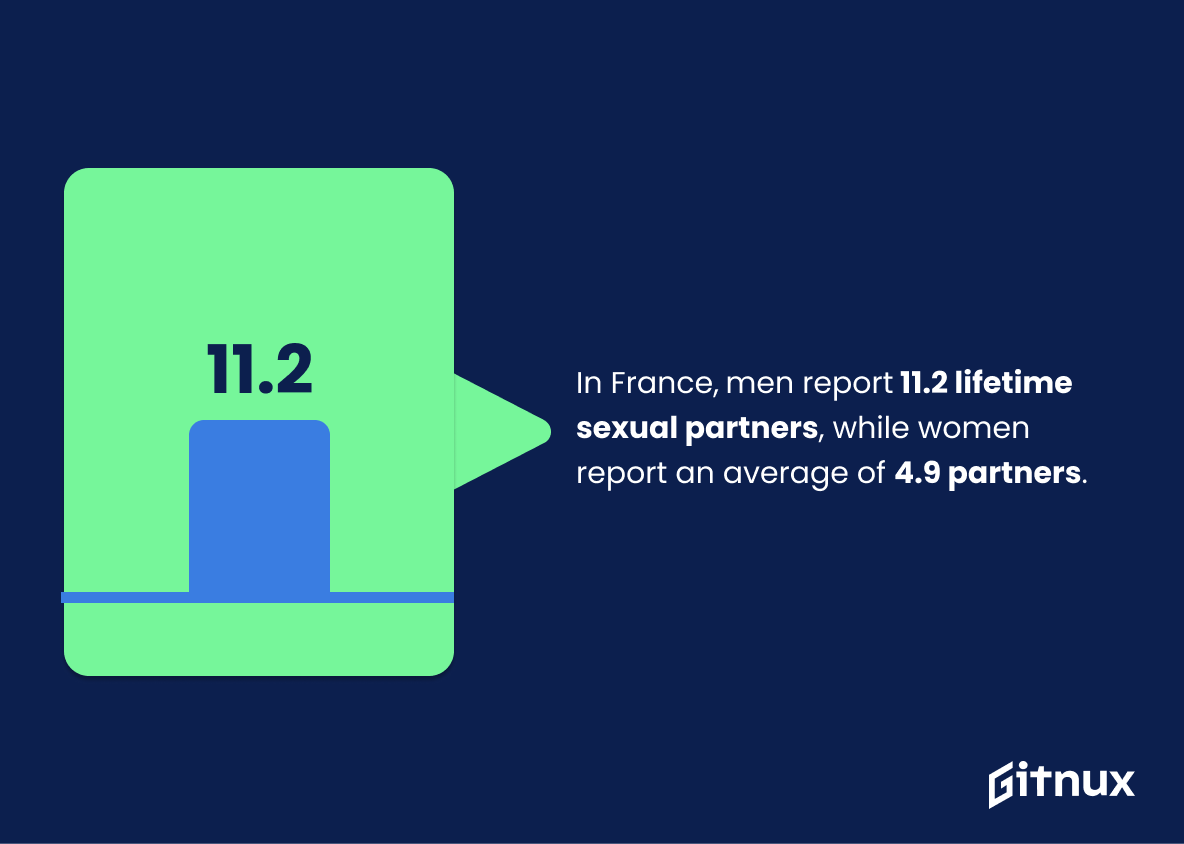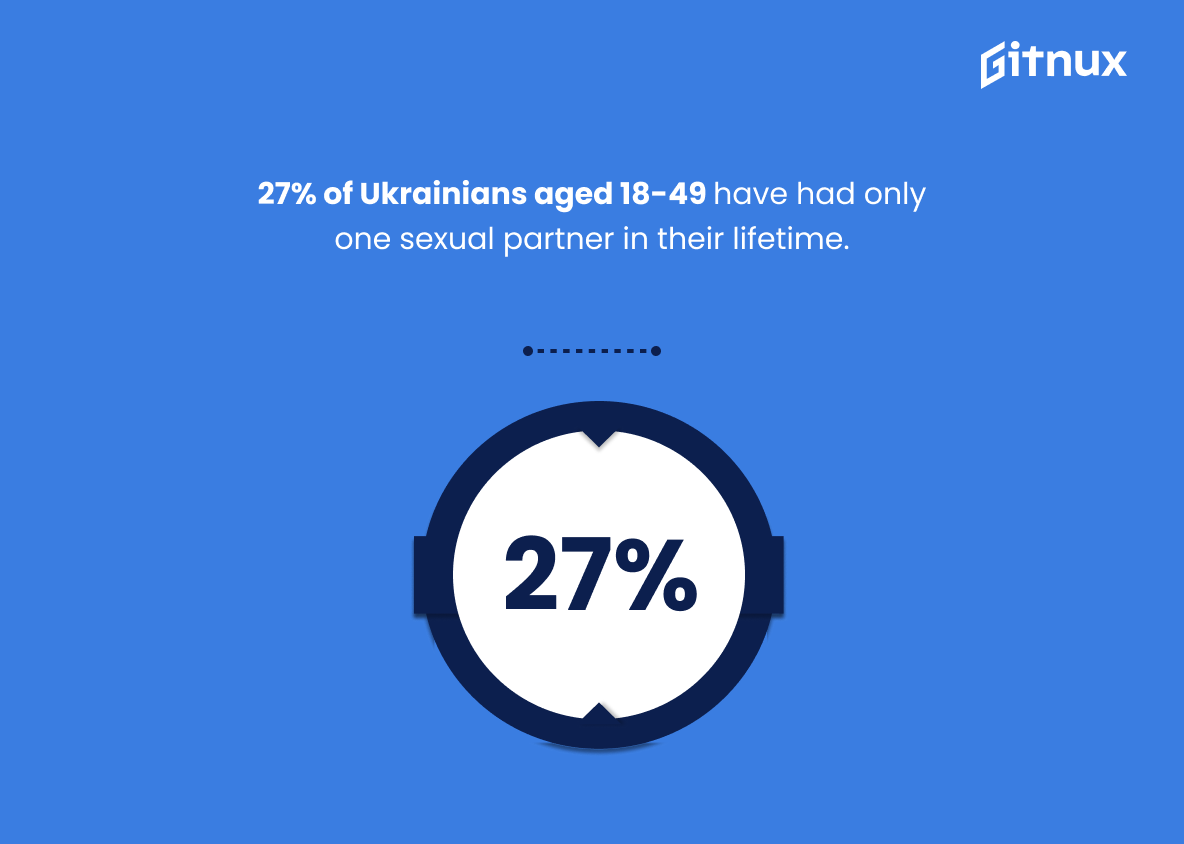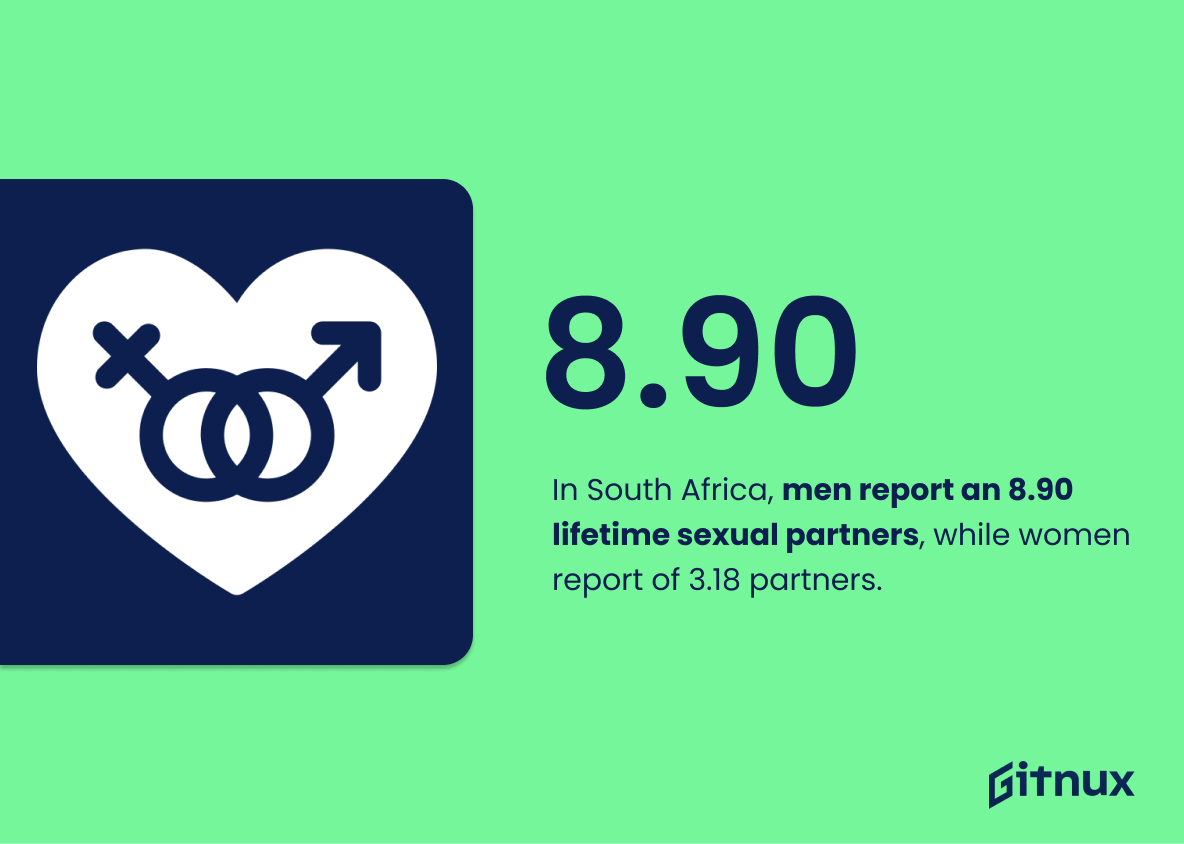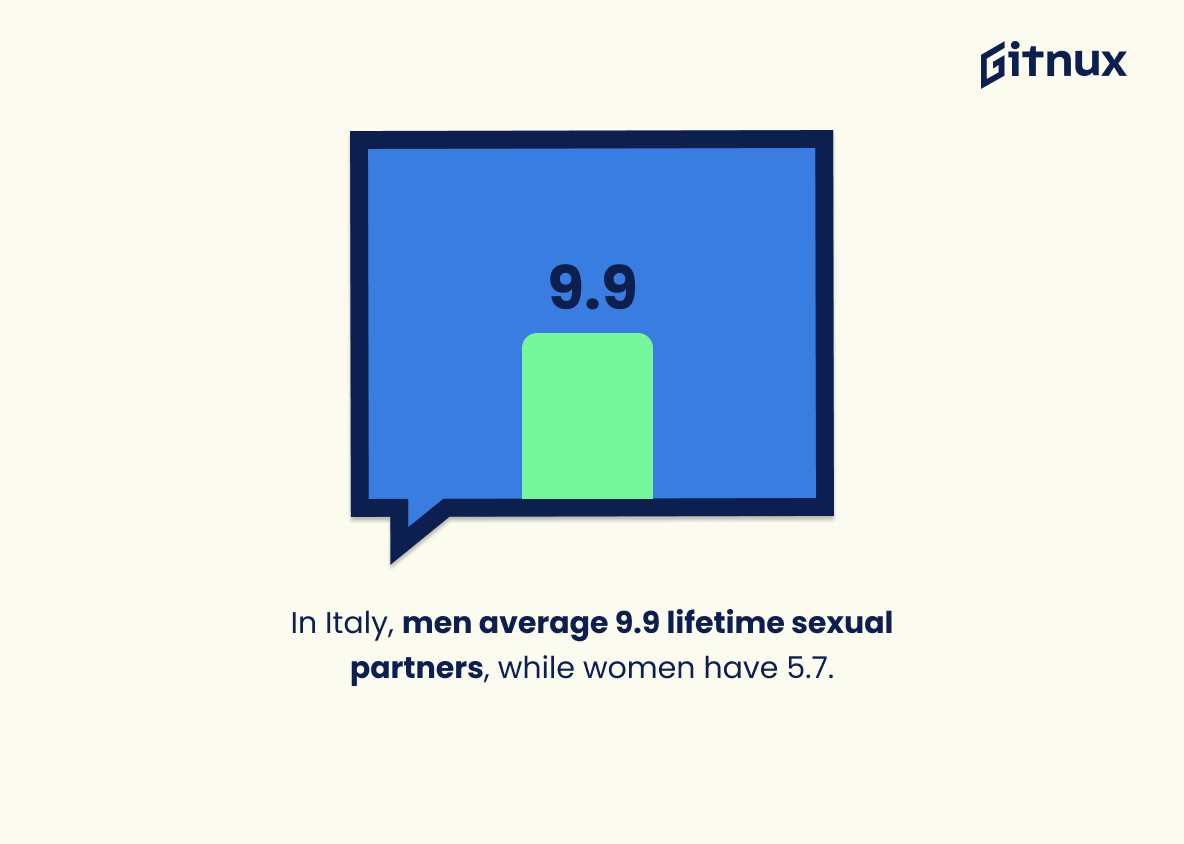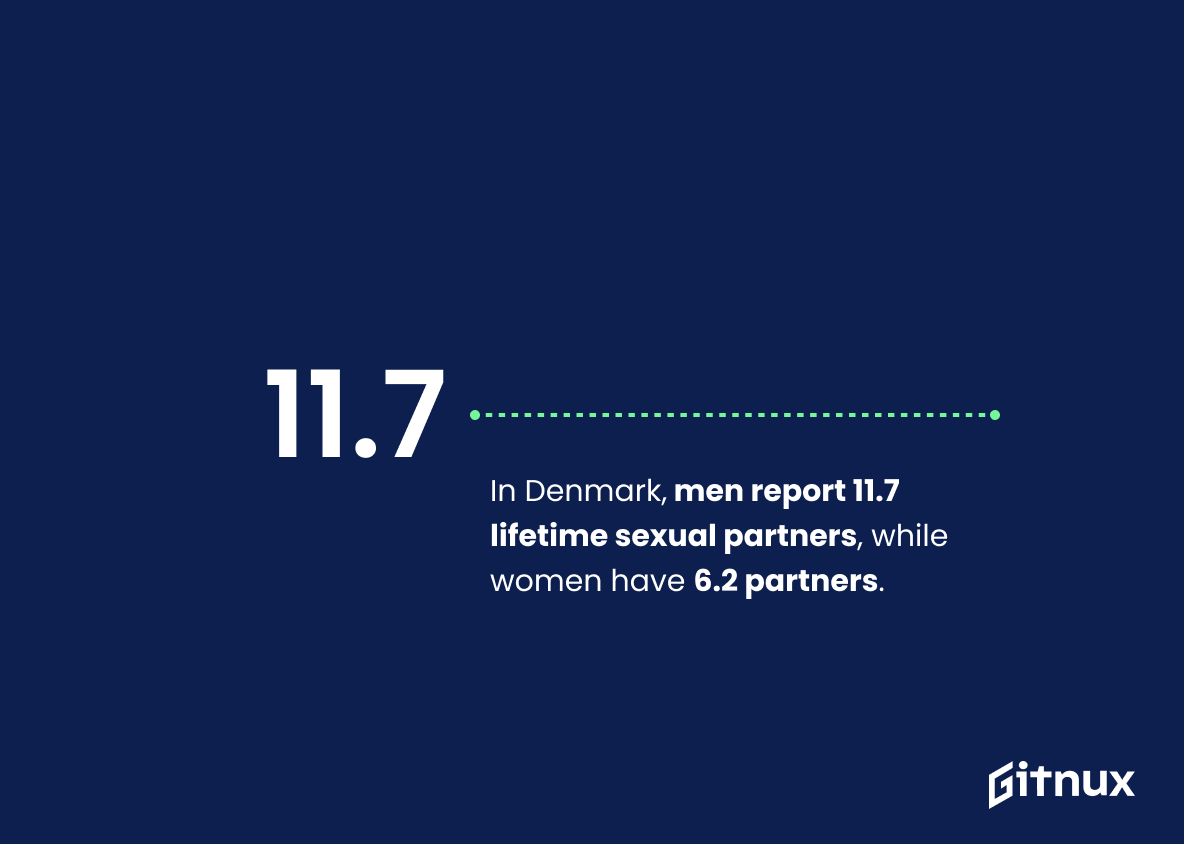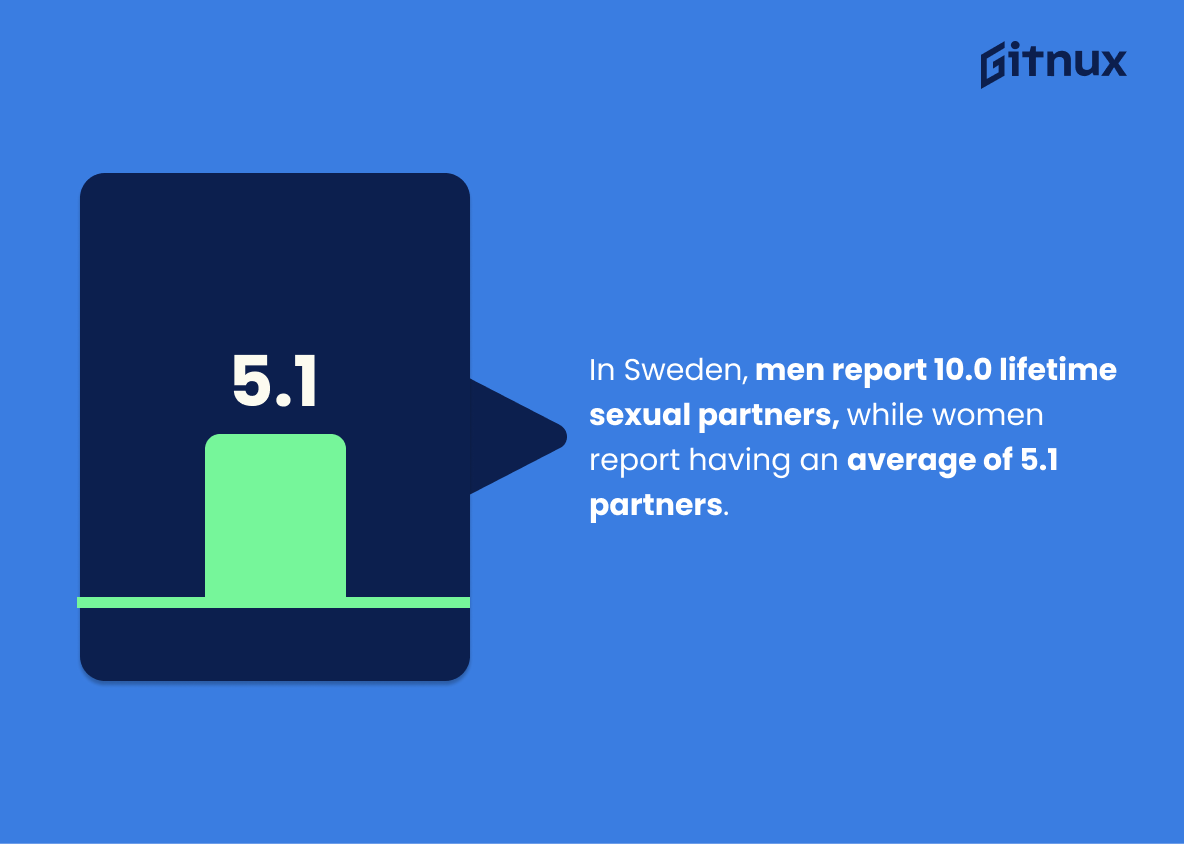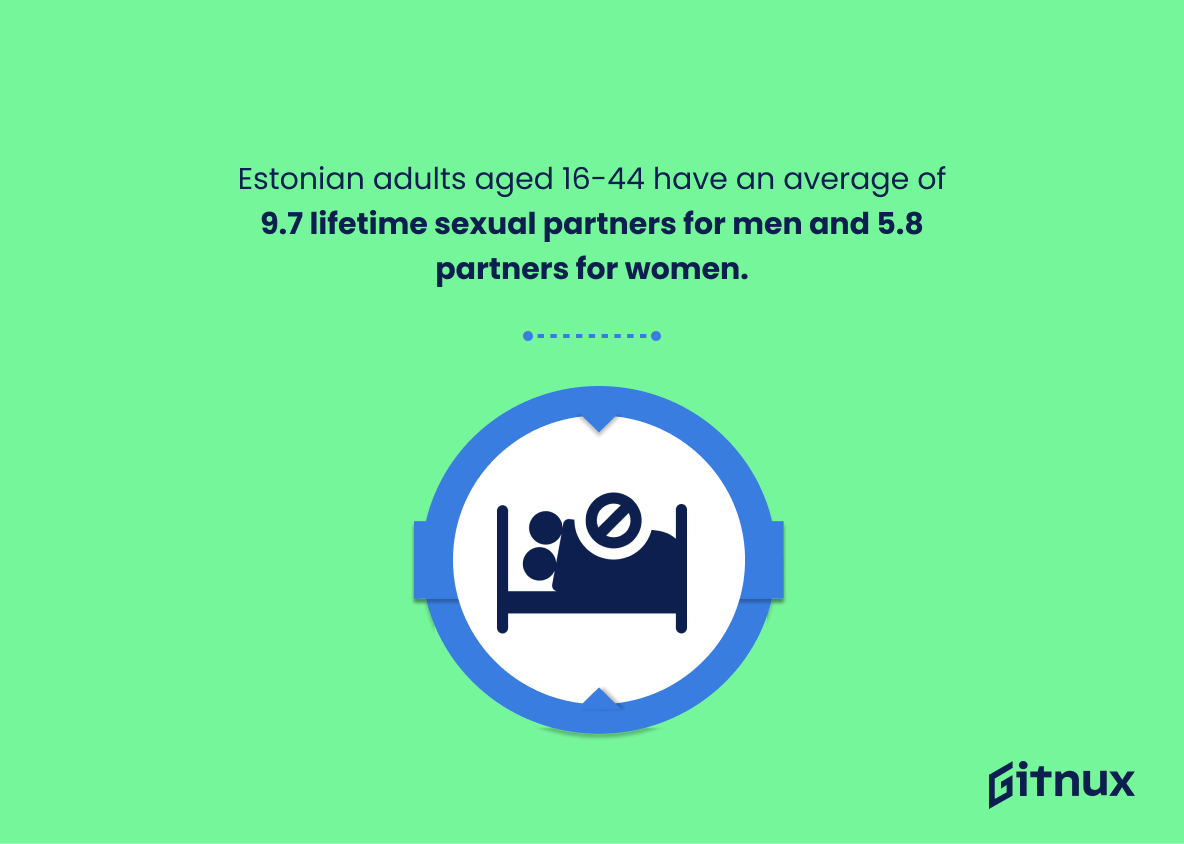Sexual partner statistics can provide insight into the sexual behavior of different populations around the world. In this blog post, we will explore 20 statistics from various countries and regions regarding lifetime sexual partners for men and women.
We’ll look at data from the United States, UK, Australia, Brazil, Norway, Canada, France, Ukraine, South Africa, Italy, Denmark, Sweden, Estonia and Japan to get a better understanding of how many people are having sex with multiple partners in each region.
From these numbers, we can gain an idea about what is considered “normal” when it comes to the number of sexual partners across cultures. So let’s dive right in.
Sexual Partner Statistics Overview
In the UK, the median number of sexual partners for men is 7, and for women, it’s 4.
This statistic is a telling indication of the gender disparity in sexual experiences. It highlights the fact that men are more likely to have had more sexual partners than women, which could be due to a variety of factors such as societal expectations, gender roles, and access to sexual partners. This statistic is important to consider when discussing sexual partner statistics, as it provides insight into the gender dynamics of sexual experiences.
Young adults aged 20-24 in the United States report an average of 6.51 sexual partners by age 24, while those aged 25-29 report an average of 8.26 partners by age 29.
This statistic is a telling indication of the changing sexual landscape among young adults in the United States. It reveals that, on average, those aged 20-24 have had fewer sexual partners than those aged 25-29, suggesting that the latter group may be more sexually active. This information is important to consider when discussing sexual partner statistics, as it provides insight into the different experiences of different age groups.
17.6% of sexually active high school students in the United States had four or more sexual partners during their lifetime.
This statistic is a stark reminder of the prevalence of multiple sexual partners among high school students in the United States. It highlights the need for comprehensive sex education and access to resources that can help young people make informed decisions about their sexual health. It also serves as a reminder that sexual health is an important issue that needs to be addressed in order to ensure the safety and well-being of young people.
Approximately 8.6% of adult men and 3.2% of women in the United States report having had four or more sexual partners in the past year.
This statistic is a telling indication of the disparity between the sexual behaviors of men and women in the United States. It highlights the fact that men are more likely to engage in multiple sexual partners in a given year than women, which could have implications for the spread of sexually transmitted infections and other health risks. This statistic is an important piece of information to consider when discussing sexual partner statistics.
In Brazil, the average number of sexual partners for men aged 18-49 is 17.3, and for women aged 18-49, it’s 6.9.
This statistic is a telling indication of the gender disparity in sexual partners in Brazil. It highlights the fact that men are more likely to have multiple sexual partners than women, which could be due to a variety of factors such as social norms, gender roles, and power dynamics. This statistic is important to consider when discussing sexual partner statistics, as it provides insight into the gender dynamics of sexual relationships in Brazil.
Men in Norway report having an average of 11.6 lifetime sexual partners, while women report having an average of 8.3 partners.
This statistic is a telling indication of the gender gap in Norway when it comes to sexual partners. It suggests that men in Norway are more likely to have multiple sexual partners than women, which could be indicative of a larger societal issue. This could be a sign of a culture that is more accepting of men having multiple sexual partners than women, or it could be a sign of a lack of sexual education and resources for women. This statistic is an important piece of the puzzle when it comes to understanding the sexual dynamics in Norway.
12.6% of individuals aged 20-24 in the US have had no sexual partners since age 18.
This statistic is a telling indication of the current state of sexual activity among young adults in the US. It provides insight into the number of individuals who have chosen to abstain from sexual activity since reaching adulthood, and can be used to compare the sexual habits of different age groups. This information can be used to inform discussions about the changing attitudes towards sex and relationships among young adults, and can help to shape the conversation around sexual health and education.
In Canada, men aged 25-44 report an average of 14.5 lifetime sexual partners, while women report an average of 6.9 partners.
This statistic is a telling indication of the gender disparity in sexual experiences. It highlights the fact that men are more likely to have had multiple sexual partners than women, which could be attributed to a variety of factors such as societal expectations, gender roles, and access to sexual partners. This statistic is important to consider when discussing sexual partner statistics, as it provides insight into the gender dynamics of sexual experiences.
In France, men report an average of 11.2 lifetime sexual partners, while women report an average of 4.9 partners.
This statistic serves as a stark reminder of the gender disparity in sexual experiences. It highlights the fact that men are more likely to have multiple sexual partners than women, which can have a range of implications for both genders. It also speaks to the power dynamics that exist between men and women in terms of sexual relationships, and the potential for unequal treatment. This statistic is an important one to consider when discussing sexual partner statistics.
27% of Ukrainians aged 18-49 have had only one sexual partner in their lifetime.
This statistic is a telling indication of the sexual culture in Ukraine, particularly among those aged 18-49. It suggests that a significant portion of the population is either abstaining from sex or engaging in monogamous relationships. This could be due to a variety of factors, such as religious beliefs, cultural norms, or personal preferences. This statistic is important to consider when discussing sexual partner statistics, as it provides insight into the sexual behavior of Ukrainians.
In South Africa, men report an average of 8.90 lifetime sexual partners, while women report an average of 3.18 partners.
This statistic is a stark reminder of the gender inequality that exists in South Africa when it comes to sexual partners. It highlights the fact that men are more likely to have multiple sexual partners than women, which can lead to a variety of issues such as increased risk of sexually transmitted infections and unplanned pregnancies. This statistic is an important reminder of the need to promote gender equality and respect in all aspects of life.
In Italy, men report having an average of 9.9 lifetime sexual partners, while women report having an average of 5.7 partners.
This statistic serves as a stark reminder of the gender disparity in sexual experiences. It highlights the fact that men are more likely to have multiple sexual partners than women, which can be attributed to a variety of factors such as societal expectations and gender roles. This statistic is important to consider when discussing sexual partner statistics, as it provides insight into the unequal power dynamics that exist between men and women in regards to sexual experiences.
In Denmark, men report having an average of 11.7 lifetime sexual partners, while women report having an average of 6.2 partners.
This statistic is a telling indication of the gender disparity in sexual experiences. It highlights the fact that men are more likely to have multiple sexual partners than women, which could be attributed to a variety of factors such as societal expectations, gender roles, and access to sexual partners. This statistic is important to consider when discussing sexual partner statistics, as it provides insight into the gender dynamics of sexual experiences.
In Sweden, men report having an average of 10.0 lifetime sexual partners, while women report having an average of 5.1 partners.
This statistic is a telling indication of the gender disparity in sexual experiences. It highlights the fact that men are more likely to have multiple sexual partners than women, which could be due to a variety of factors such as societal expectations, gender roles, and access to sexual partners. This statistic is important to consider when discussing sexual partner statistics, as it provides insight into the gender dynamics of sexual experiences.
Estonian adults aged 16-44 have an average of 9.7 lifetime sexual partners for men and 5.8 partners for women.
This statistic is a telling indication of the gender disparity in sexual experiences. It reveals that, on average, men have had nearly twice as many sexual partners as women. This disparity is likely reflective of the unequal power dynamics between men and women in society, and serves as a reminder of the need for greater gender equality.
In Japan, men report having an average of 4.4 lifetime sexual partners, while women report having an average of 2.8 partners.
This statistic is a telling indication of the gender disparity in Japan when it comes to sexual partners. It highlights the fact that men are more likely to have multiple sexual partners than women, which could be due to a variety of factors such as cultural norms or societal expectations. This statistic is important to consider when discussing sexual partner statistics, as it provides insight into the gender dynamics of sexual relationships in Japan.
Conclusion
The statistics presented in this blog post demonstrate that the average number of lifetime sexual partners varies significantly across countries and regions. In general, men tend to report having more sexual partners than women, although there are some exceptions, such as Japan, where the difference is much smaller.
Additionally, young adults aged 20-24 typically have fewer sexual partners than those aged 25-29. Furthermore, a significant percentage of individuals in many countries have had only one or no sexual partner during their lifetimes. These findings suggest that people’s experiences with sex vary greatly depending on their age and location.
References
0. – https://www.bmchealthservres.biomedcentral.com
1. – https://www.link.springer.com
2. – https://www.ons.gov.uk
3. – https://www.researchgate.net
4. – https://www.bmcpublichealth.biomedcentral.com
5. – https://www.cdc.gov
6. – https://www.50.statcan.gc.ca
7. – https://www.ncbi.nlm.nih.gov
8. – https://www.pubmed.ncbi.nlm.nih.gov

